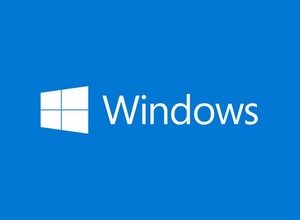 [German]A small note for administrators who use Microsoft's App-V technology. Microsoft wanted to withdraw from App-V in April 2026, but has announced that it will continue to support the product in Windows clients and servers. The information must have been published by Microsoft in November 2024. Here is a rough overview of what I read from the announcements.
[German]A small note for administrators who use Microsoft's App-V technology. Microsoft wanted to withdraw from App-V in April 2026, but has announced that it will continue to support the product in Windows clients and servers. The information must have been published by Microsoft in November 2024. Here is a rough overview of what I read from the announcements.
What is App-V?
The abbreviation App-V stands for Microsoft Application Virtualization and is Microsoft's solution for application virtualization. The applications are virtualized and streamed from a server to a client, where they are executed in a virtual environment in a sandbox. Wikipedia has some explanations on this topic here.
The advantage is that you can get started on an almost 'software-free' computer and access all App-V applications provided by the server from there without having to install anything. Only an App-V client is required, which must be installed on the computer. A fast network connection should also be available to load the application into the sandbox. However, the user can use the application shortly after the start of the stream, as other program parts are loaded in the background.
The virtualized applications can be Win32 applications. The whole thing is already available from Windows 10 version 1607 in the Enterprise versions. Microsoft has published some documentation on App-V here.
Confusion about App-V support: to be phased out
In the support article App-V in Windows support policy, Microsoft explains on 15.11.2024 that the Microsoft Application Virtualization (App-V) function will no longer be developed further and has moved to a fixed extended support lifecycle. As part of the extended support, it will continue to be delivered as part of Windows. But requests to change the product design or add new features are not possible.
I'm not that close to the topic, but in this blog post, someone outlines the April 2026 end-of-life date for App-V and notes "Microsoft has never, to its knowledge, adequately explained why App-V needs to go away." At some point, the decision was probably made to let App-V die. Microsoft's official recommendation was to replace App-V by moving the operating system to Azure Virtual Desktops and packaging the applications in MSIX and deploying them with MSIX App Attach.
App-V no longer deprecated after all
On the Microsoft site for obsolete and removed information, however, you will find the information "As of November 2024, the Application Virtualization (App-V)-Client in Windows and will remain with a fixed extended support lifecycle."
The information is hidden in an article from September 2019 on the Desktop Optimization Pack, whose support expires in April 2026.
Further information on App-V support
I recently came across the post App-V is no longer being deprecated on German site administrator.de. The post linked to M.A.D. Day 2024 – Hamburg 15th November 2024 – Recap, dated 18. December 2024, which was published in Microsoft's Core Infrastructure and Security Blog. The author of the article probably revealed some details at the M.A.D. Day (Modern Application Deployment) in Hamburg. The App-V client and sequencer will remain, but the server will disappear.
In April 2026, the following App-V components will reach the end of their service life:
- All App-V 5.0 SP3 and 5.1 Clients
- All App-V 5.0 SP3 and 5.1 Sequencer
- App-V Server components 5.1 (Management / Publishing and Reporting Server)
The original plan was to remove the App-V client with the release of Windows 26H2. The last Windows client OS with support for App-V would therefore have been Windows 25H2. Since this release is also an LTSC version, and App-V support is tied to the Windows OS used, the end date for App-V support would be tied to the end date of the OS used.
- Windows 11 24H2 has a support end date in October 2027
- Windows Server 2025 as the end date for extended support in 2034
These operating system dates match the support dates for App-V. When Microsoft says that the App-V client is no longer obsolete, it means that the feature will not be removed from future operating system versions. The Sequencer will also continue to be part of the ADK. This includes both Windows Client and Server as well as Windows 365 and AVD versions.
In addition, Microsoft is also committed to providing bug fixes and security fixes for App-V on the respective operating systems. This also includes the supported Windows client versions and servers.






